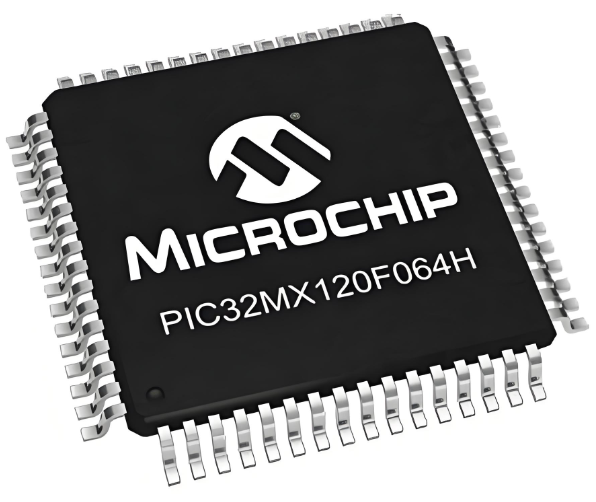PIC microcontrollers, developed by Microchip Technology, are a family of programmable embedded devices widely used in electronics engineering and embedded systems. Renowned for their versatility, low power consumption, and cost-effectiveness, PIC microcontrollers serve as the "brain" in countless applications, from consumer electronics to industrial automation.
PIC microcontrollers are based on a reduced instruction set computing (RISC) architecture, which emphasizes simplicity and efficiency in instruction execution. This design allows for faster processing speeds and lower power usage compared to some complex instruction set computing (CISC) alternatives.
Core features include:
-
Integrated Peripherals: Most PIC models include built-in peripherals such as analog-to-digital converters (ADCs), digital-to-analog converters (DACs), timers, counters, PWM modules, UART, SPI, and I2C interfaces. These reduce the need for external components, simplifying circuit design.
-
Varied Memory Options: They offer different configurations of flash program memory, RAM, and EEPROM, catering to applications ranging from simple control tasks to more complex operations.
-
Low Power Modes: Designed with power efficiency in mind, PIC microcontrollers include sleep modes and idle states, making them ideal for battery-powered devices like remote sensors and portable electronics.
-
Wide Voltage Range: Many models operate across a broad voltage spectrum (e.g., 2.0V to 5.5V), enhancing compatibility with various power sources and electronic systems.
Microchip offers a diverse range of PIC microcontroller families to suit specific application needs:
-
PIC10F: Ultra-small 8-bit microcontrollers with minimal pins, perfect for space-constrained, low-complexity applications like simple switches or basic sensors.
-
PIC12F/PIC16F: Popular 8-bit families balancing performance and cost, widely used in consumer electronics, automotive accessories, and home appliances.
-
PIC18F: Enhanced 8-bit microcontrollers with higher memory capacity, advanced peripherals, and improved processing speed, suitable for industrial control and mid-range embedded systems.
-
PIC24F/dsPIC33F: 16-bit families offering increased computational power, enhanced DSP capabilities, and expanded memory, ideal for motor control, audio processing, and high-speed data acquisition.
-
PIC32: 32-bit microcontrollers based on the MIPS architecture, providing high performance for complex applications such as IoT devices, medical equipment, and advanced industrial systems.
PIC microcontrollers are programmable using industry-standard languages like C and assembly, supported by Microchip’s MPLAB X Integrated Development Environment (IDE). MPLAB X offers a comprehensive suite of tools, including compilers, debuggers, and simulators, streamlining the development process.
Programming hardware includes:
-
MPLAB ICD 4: In-circuit debugger and programmer for real-time debugging and firmware programming.
-
PICkit™ 4: A cost-effective development tool supporting in-circuit serial programming (ICSP) and debugging for most PIC families.
-
Curiosity Development Boards: Low-cost evaluation boards with pre-mounted PIC microcontrollers, simplifying prototyping and testing.
PIC microcontrollers are utilized across numerous industries due to their adaptability:
-
Consumer Electronics: Smart home devices, wearable technology, gaming accessories, and home appliances.
-
Automotive: Engine control modules, dashboard displays, sensor interfaces, and safety systems.
-
Industrial Automation: Motor drives, programmable logic controllers (PLCs), robotics, and process monitoring systems.
-
Medical Devices: Portable health monitors, infusion pumps, and diagnostic equipment.
-
IoT and Embedded Systems: Wireless sensors, smart meters, and connected devices for home and industrial IoT networks.
-
Aerospace and Defense: Avionics components, navigation systems, and security devices requiring high reliability.
Engineers choose PIC microcontrollers for their:
-
Cost-Effectiveness: Competitive pricing across all families, making them accessible for both hobbyists and large-scale industrial projects.
-
Reliability: Robust design ensuring stable operation in harsh environments with temperature variations and electrical noise.
-
Scalability: Compatibility across families allows developers to upgrade or downsize projects without major changes to software architecture.
-
Strong Ecosystem: Extensive documentation, application notes, and community support, including forums and tutorials, easing the learning curve for new users.
PIC microcontrollers continue to evolve with advancements in integration, power efficiency, and connectivity, solidifying their position as a leading choice in embedded systems design. Their combination of performance, flexibility, and support makes them a go-to solution for innovators in electronics and engineering.
PIC microcontrollers, Microchip Technology, embedded systems, RISC architecture, 8-bit microcontrollers, 16-bit microcontrollers, 32-bit microcontrollers, MPLAB IDE, programmable peripherals, IoT devices, industrial automation, automotive electronics
